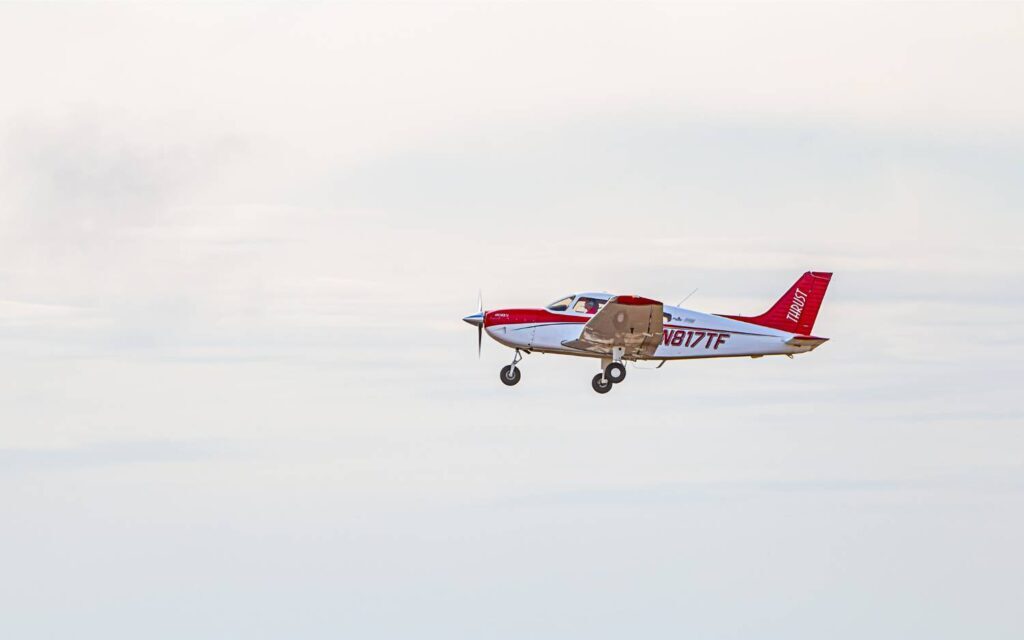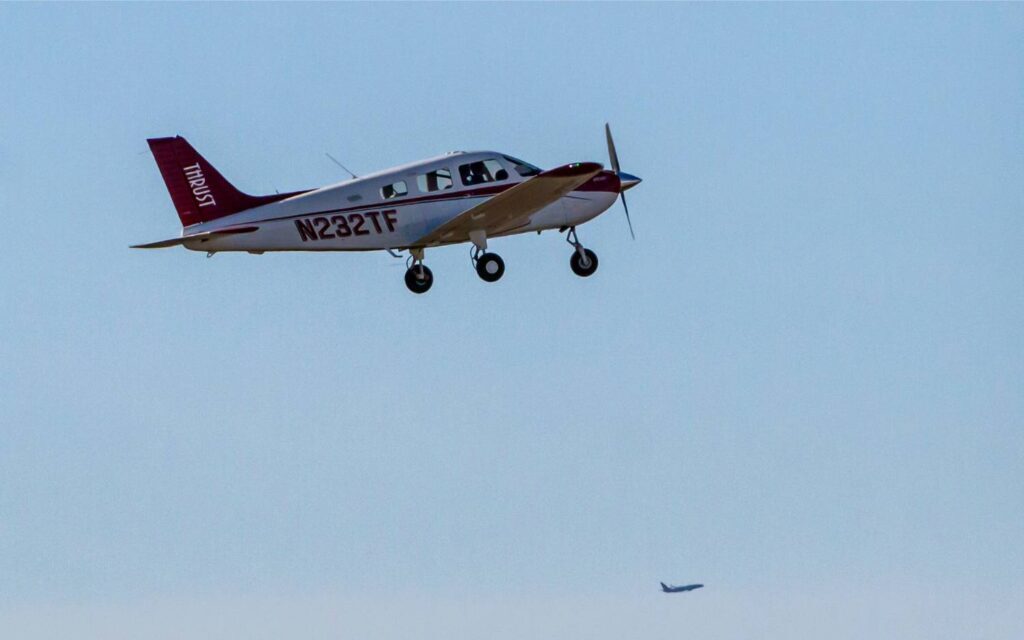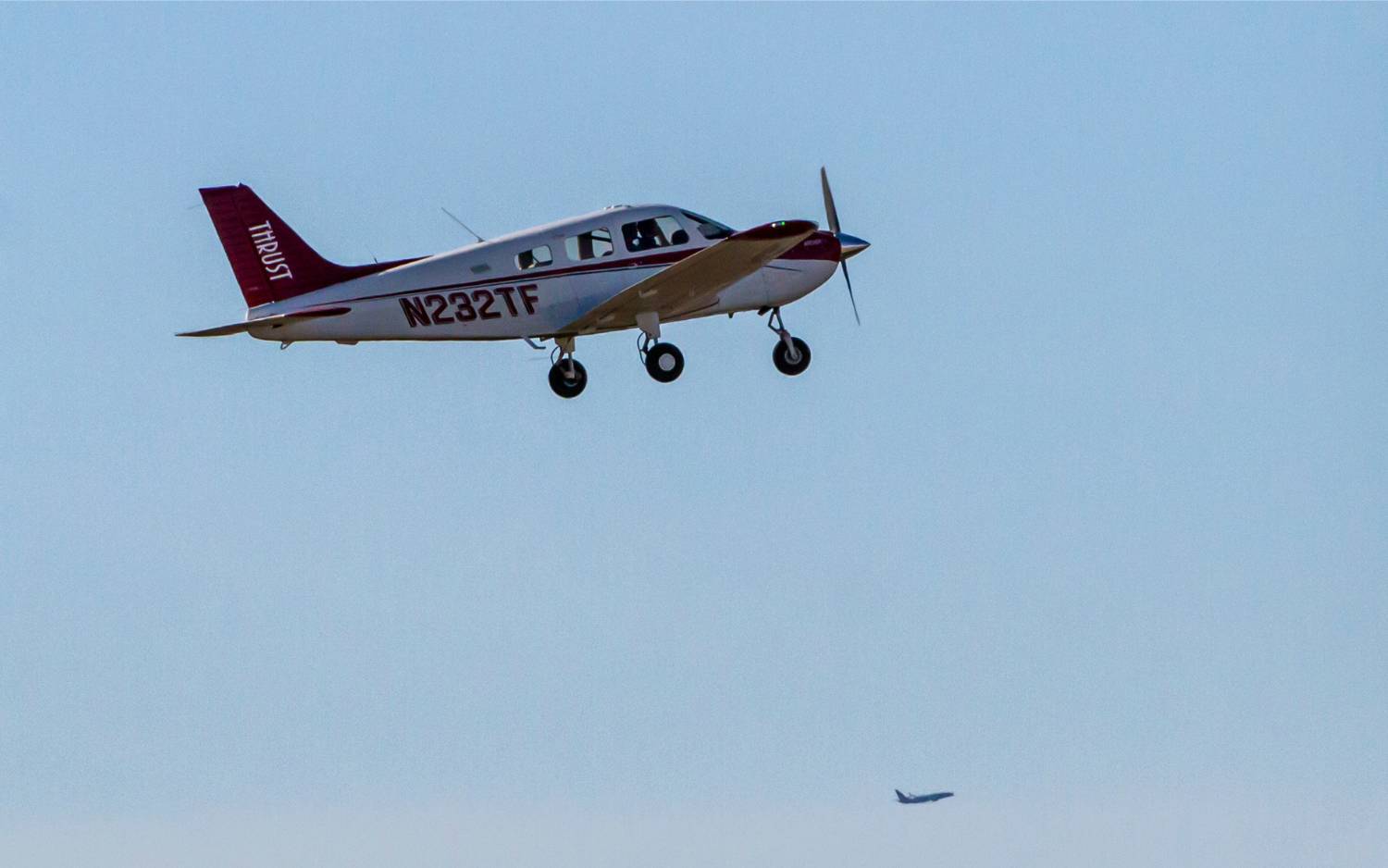There are several stall maneuvers that are not required for the private, instrument, or even commercial courses.
These are particular stalls that you might read a little about but not go out and practice on every flight.
However, your flight instructor will demonstrate them to you because they are a hazard you must be aware of, even though they aren’t listed as specific maneuvers.
One of these hazardous stalls is the cross-controlled stall. In this article we’ll cover the risks involved with cross-controlled stalls, how they can happen, and the steps you can take to prevent them.
What Are Cross-Controlled Stalls?
As the name suggests, the cross-control stall originates from a situation where the plane is in uncoordinated flight.
More specifically, it occurs when the rudder is used incorrectly to increase the turn rate while the ailerons are moved in the opposite direction to keep the bank angle shallow.
To quote the FAA’s Airplane Flying Handbook: “The aerodynamic effects of the uncoordinated, cross-control stall can surprise the unwary pilot because this stall can occur with very little warning and can be deadly if it occurs close to the ground. The nose may pitch down, the bank angle may suddenly change, and the airplane may continue to roll to an inverted orientation, which is usually the beginning of a spin.”
Obviously, it’s vital to understand that keeping the aircraft coordinated, especially during slow flight, stall practice, and pattern work, is essential.
It’s also important to remember that 80 percent or more of stall/spin accidents happen at low altitudes.
Any situation that causes an increase in stall speed during low and slow operations (i.e., in the traffic pattern) must be thoroughly understood to mitigate them as a risk factor.

Cross-Control Stalls Versus the Forward Slip to Land
When you first read about the cross-controlled stall, you might be reminded of another maneuver where you are taught to apply opposite aileron and rudder inputs: the forward slip to land.
The forward slip to land is a maneuver used by pilots to intentionally lose excess altitude on final approach without gaining airspeed.
To complete it, the pilot dips one wing and uses opposite rudder to establish a slip. The excess drag of this flight position steepens the approach path. It’s a valuable tool for situations where flaps are unavailable or an obstacle must be cleared.
Unlike the cross-controlled stall, the forward slip to land is planned and executed carefully.
While it does involve uncoordinated flight, the aircraft remains stable and recovers readily when the control inputs are released.
The cross-control stall, on the other hand, is an accidental maneuver entered due to poor technique.
Cross-Control Stall Scenarios
To understand the cross-controlled stall, it’s essential to start with the scenario in which it is a real danger. Here’s the setup, but make no mistake — this is not a how-to guide. This is a how-not-to-do guide.
A pilot is flying the pattern for an approach and landing.
On the base leg, they inadvertently delay the turn and overshoot the final approach path.
During the turn to final, the pilot realizes they will overshoot and compensates by steepening the bank to increase the rate of turn.
But, as the bank angle exceeds 30 degrees, the pilot worries that a steeper bank angle could cause an accelerated turning stall, and rightly so.
So, to compensate for the missed final approach path, the pilot maintains the wings in a 30-degree bank — which will require applying opposite aileron — while also increasing the rudder pressure into the turn.
As the wings dip more, the pilot corrects by applying opposite ailerons to keep the bank shallow. Progressively, more rudder and more opposite aileron is required.
As the aircraft enters uncoordinated flight, the stall speed steadily increases.
It will eventually become higher than the airspeed, and the plane will stall suddenly at a low altitude with no hope of a safe recovery.

Cross-Control Stall Avoidance
That’s the setup and the scenario that could result in an accident, but where did our hypothetical pilot go so wrong, and what should they have done about it?
The root cause of this scenario was that the pilot overshot the turn to final. This may have happened unexpectedly due to a tailwind on base, causing a higher-than-normal ground speed.
Of course, every pilot should be able to compensate for this situation, which could occur on any flight. The scenario only gets dangerous once the pilot stops flying the aircraft in a coordinated fashion.
The stall would not have happened had the pilot maintained 30-degree coordinated turns and a safe airspeed while rejoining the final approach.
If 30-degree turns are insufficient to be re-established, a go-around should be initiated.
It could also result from a power-out approach, such as an emergency landing following an engine failure.
Suppose the pilot plans their approach poorly and has no power or extra altitude to compensate.
In that case, it’s even more understandable how they may find themselves in a cross-controlled stall scenario.
Cross-Controlled Stall Demonstration
Performing a cross-controlled stall is not required for private, instrumental, or commercial pilots as a maneuver.
It is required on the flight instructor checkride, as demonstrating it to your students is essential to their flight training.
While private, instrument, and commercial students don’t practice it, they still need to be familiar with it as a risk factor when performing their power-on, power-off, and accelerated stall maneuvers.
This requirement is listed in the risk management area of each maneuver.
When setting up for the demonstration, the CFI applicant should remember that the risk of entering a spin is higher than that of other stalls, so the minimum altitude for the maneuver is 3,000 feet AGL.
Further, the aircraft should be configured in the safest setup: power at idle and flaps up to ensure no aircraft limitations are exceeded.
Approach the demonstration as if you are performing a power-off emergency glide and approach to an off-airport landing — a scenario where the cross-control stall would be a significant risk.
The ACS lists the following skills for the cross-controlled stall demonstration. Be sure to check the current ACS for any updates.
- Clear the area, and select an entry altitude so that it can be completed no lower than 3,000 feet AGL.
- Configure the plane and establish a normal glide airspeed.
- Roll into a medium-bank turn, then apply excessive rudder while maintaining a constant bank angle. Increase elevator pressure to keep the nose from lowering.
- Acknowledge the cues of the first indication of a stall.
- Recover at the first indication or after a full stall, as specified.
- Describe and demonstrate conditions that lead to a cross-controlled stall for future avoidance.
- Analyze and correct common errors related to this Task.

